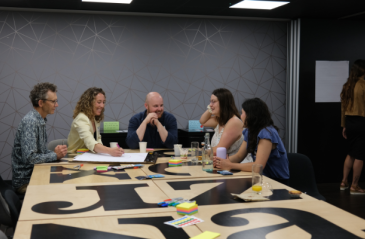
The information barriers holding back climate action and how to break them

How did Singapore successfully introduce its GeBIZ e-procurement system? @CPI_Foundation investigates...
Share articleThe GeBIZ online portal has provided Singapore's business and government communities with a one-stop shop for its procurement interactions
Share article10 years after Singapore's GeBIZ opened, it was being used by 10,000 buyers, 144 agencies and had 181,000 orders placed worth SGD2 billion
Share articleWe put our vision for government into practice through learning partner projects that align with our values and help reimagine government so that it works for everyone.
Trust Singapore to aim high when it comes to the deployment of digital technology.
In 1998, as part of a major e-government initiative, the city state's policymakers decided to move the public sector procurement process online by developing an ambitious e-procurement portal. The portal would range from promoting the tender to delivering the bids to the invoicing and payment of the suppliers' invoices. It would be, in essence, a “one-stop, non-stop” centre for government and business to interact.
So, did the bold ambition turn into successful reality?
Prior to the portal's introduction, Singapore's government had become well versed in computer technology. Since the 1980s, it had been used to transform the administration and delivery of its public services, benefiting citizens and businesses by providing greater convenience and cost-savings. Its approach, though, was mainly focused on delivering information, with relatively little interaction between government and business, and this applied to government procurement as to other interfaces between the public and private sectors. The portal - the Government Electronic Business (GeBIZ) - was to change all that.
Under the plans, which were spearheaded by Singapore's Ministry of Finance, different pockets of activities or systems in the Singapore public sector related to procurement were brought together to create a single integrated system - GeBIZ. One of the largest government e-commerce initiatives, it aimed to achieve a more transparent and fair trading environment that would, in turn, lead to better value for money.
The Defence Science and Technology Agency (DSTA) project team developed the GeBIZ application in phases. The first phase was delivered in June 2000 and supported the electronic catalogue and the online publication of tender notices. More features such as online supplier registration, online tendering, small value purchases etc. were added over the course of the next two years.
As of December 2005, there were more than 9,000 users in the public sector from 120 government agencies that were using GeBIZ for their procurement and other e-commerce activities.
By 2008, there had been an enormous amount of activity via GeBIZ. This included 10,000 buyers, 79,000 quotations worth SGD900 million, 144 agencies regularly participating and 181,000 orders placed, worth SGD2 billion. Such numbers tell a story of positive public impact but why did it succeed?
Although there was initial resistance from various government departments and from the public sector bodies involved in procurement, the Ministry of Finance's backing - financial and otherwise - carried great weight. It was also consistent with Singapore's drive towards a widespread use of e-government technologies to deliver increasingly interactive public services
Similarly, it also benefited from having clear objectives - which have been maintained throughout - as well as strong evidence which supported its introduction. For example, a detailed study was instituted to look into all aspects concerning the policy and this approach enabled business knowledge and past experiences captured in these systems to be retained. This also shortened the development cycle and achieved maximum cost-effectiveness.
And finally, the scheme has been well managed. Multiple officers are required to sign off on bids, reducing the risks of nepotism and corruption, and there is a clear procurement process. The DSTA is responsible for the management of GeBIZ, including invoicing, and the procurement process itself is also carefully managed.
Singapore has long been a destination of choice for policymakers from around the world seeking to learn new ways to manage the delivery of public services and achieve a better public impact. Thanks to the success of GeBIZ, procurement teams are now more than likely to be among the throng passing through Changi's packed arrivals hall.












